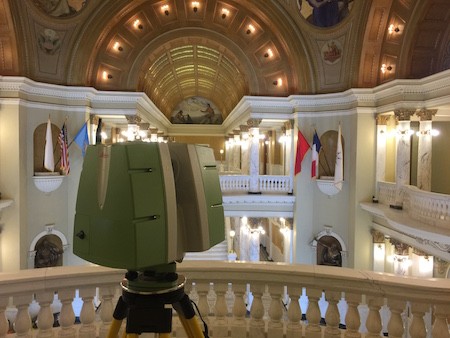
The non-intrusive nature of laser scanning provides a hands-off means of documenting historical buildings.
Case Study: Laser Scanning The Historic South Dakota State Capitol Building
Location: Pierre, South Dakota
Task: TruePoint provided 3D laser scanning services for the South Dakota State Capitol Building. Completed in 1910, this architectural and historic landmark has a central rotunda flanked by legislative wings and features a copper dome, Corinthian columns, rusticated walls of granite and limestone, ornate plasterwork, murals, paintings and sculptures. The client wanted to capture the as-built conditions to document the architectural detail and historic art for restoration or should a natural disaster occur.
Challenge: Traditional survey methods would take a great deal of time and not provide this client with the amount of detail or documentation needed to recreate the building. The client wanted to capture accurate measurements and exquisite details of every facet of the building without disturbing the 100-year old historical architecture or fragile artwork. Also, the client did not want to disrupt state business or tours of the building.
Solutions: Laser scanning is ideal for quickly capturing highly accurate and detailed as-built conditions of historical structures and buildings. In only a few days on site, TruePoint used high-definition Leica laser scanners to gather precise measurements and images of the Rotunda, House and Senate Chambers, minimizing interference with business or tours. The scan is comprehensive, eliminating the need to return to the client’s site. Also, laser scanners are non-contact, they scan from tripods on the ground up to 300 yards, keeping architecture and artwork untouched.
Deliverables: TruePoint delivered point cloud data to the client, which can easily be converted to a 3D model to reference for historical rehabilitation. TruView’s were also delivered, which are 3D 360 degree virtual images from each scan location, that can be rotated, enlarged and interrogated for dimensions and levels.
Added Value: Companies have rapidly embraced laser scanning because they reduce both the costs and the risks associated with as-built documentation. The non-intrusive nature of laser scanning provides a hands-off means of documenting fragile, historical objects. Also, laser scanning offers significant benefits when detail at height is important, such as cathedrals, tall facades and historic civil engineering structures. There is usually no need to rent lifts to register height dimensions, precise measurements can be captured by laser scanners at ground level.
If you are in the North or South Dakota and are in need of as-builts, construction verification, or architectural documentation call or email TruePoint’s Mountain Region office for a quote! Contact Dave Schaff at 720-618-1029 or dschaff@truepointscanning.com.
Interested and want to hear more? We offer Lunch ‘n Learn presentations at your office!
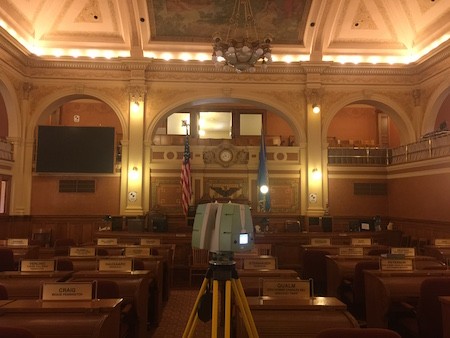
TruePoint 3D laser scanned the South Dakota State Capitol Building.
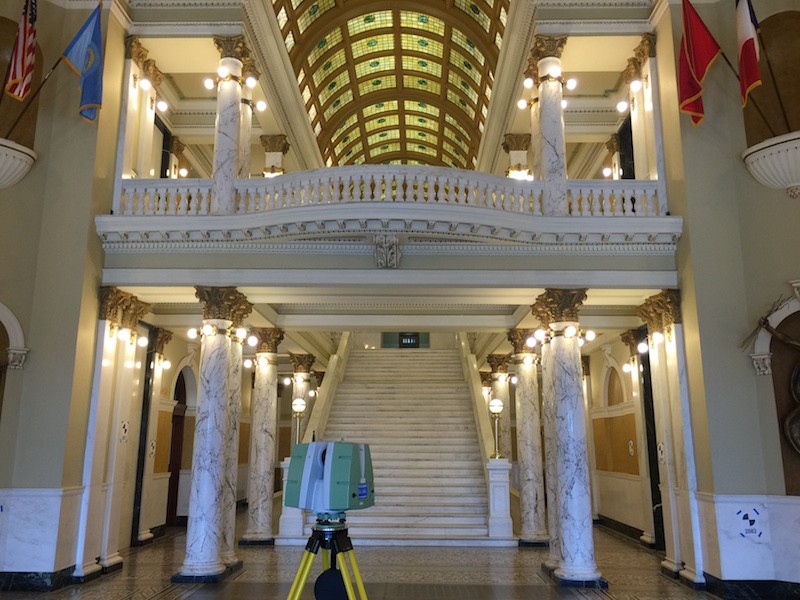
Picture of the Leica P20 scanner capturing the architectural details of this historic building.
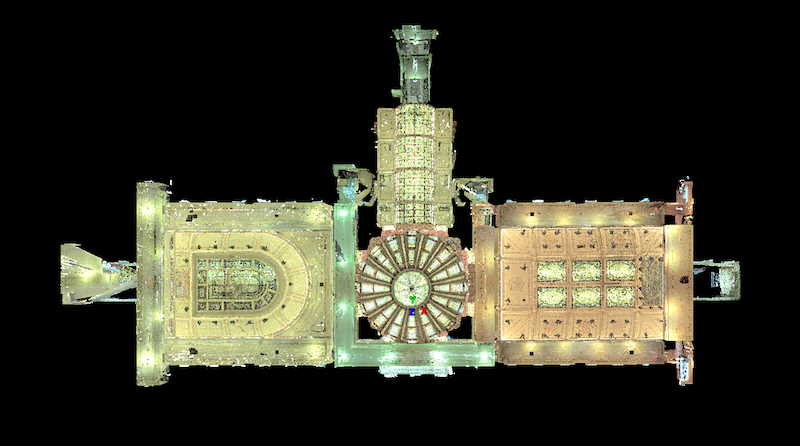
Colorized point cloud of the entire building.
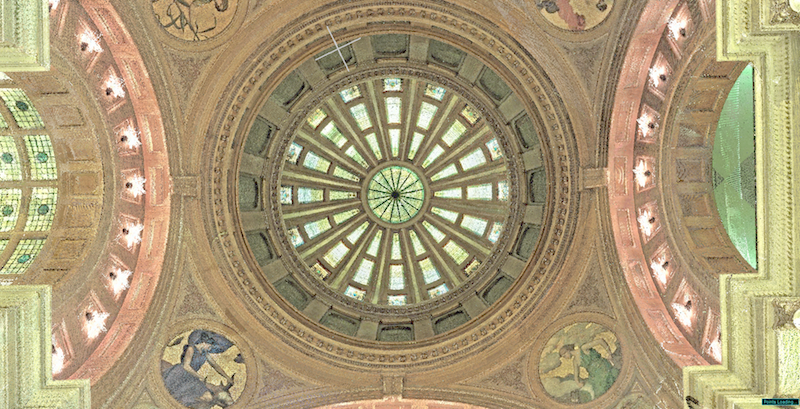
Close up of the point cloud (looking up) showing the architectural details of the ceiling.
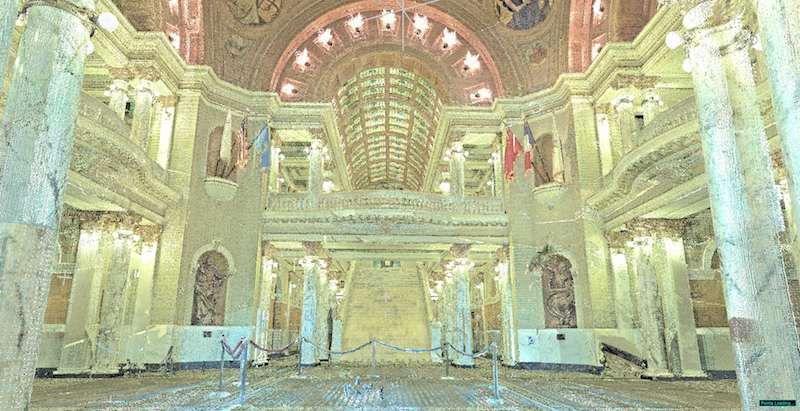
Laser scanners can capture details at great heights from ground level.
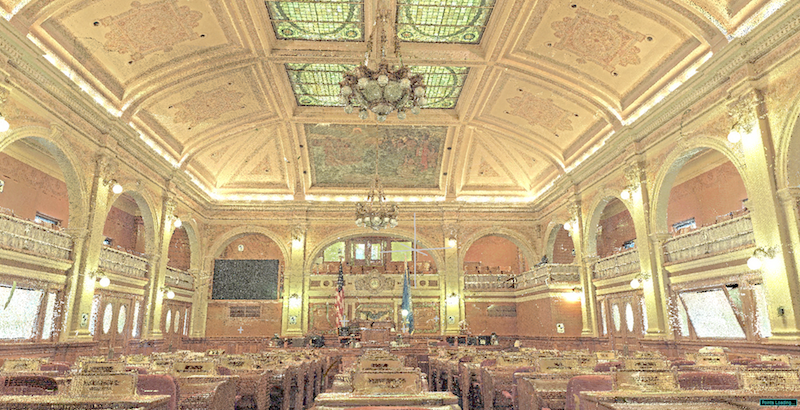
Colorized point cloud of the Senate Chambers.
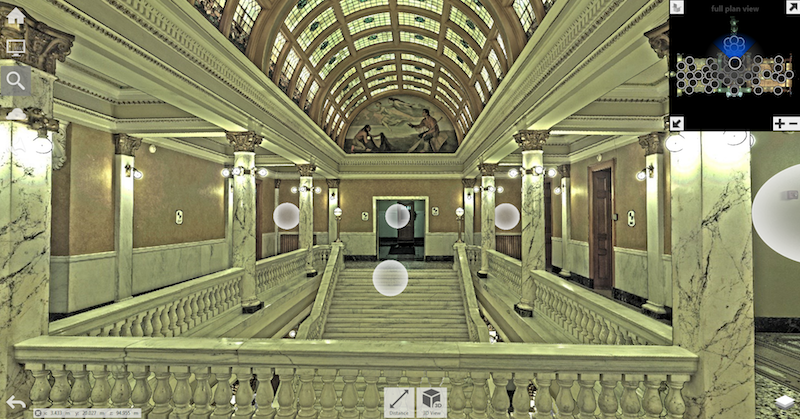
TruePoint delivered TruView’s and Realviews to the client, 3D 360 degree virtual images from each scan location.
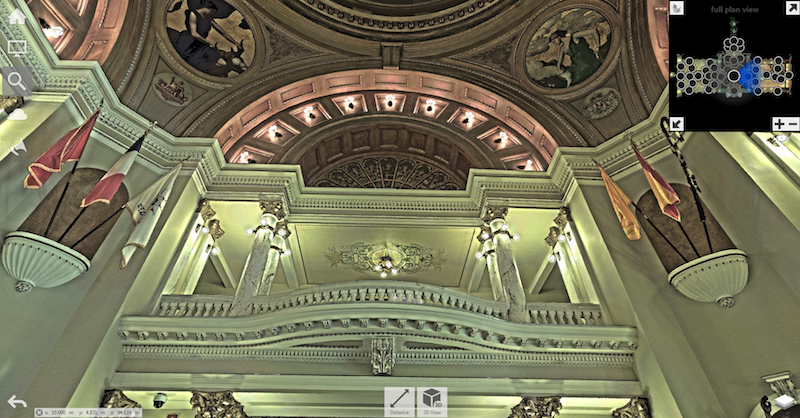
Autodesk Recap Realview of the architectural detail in the building.

